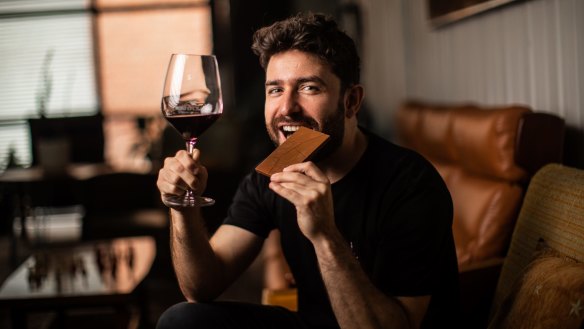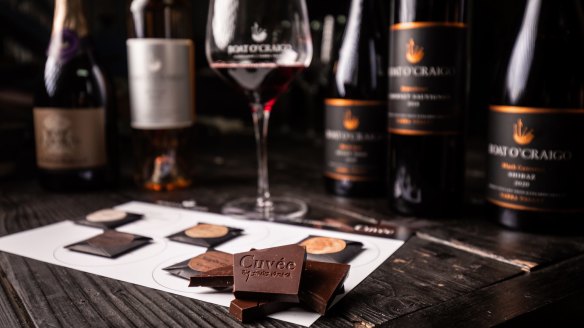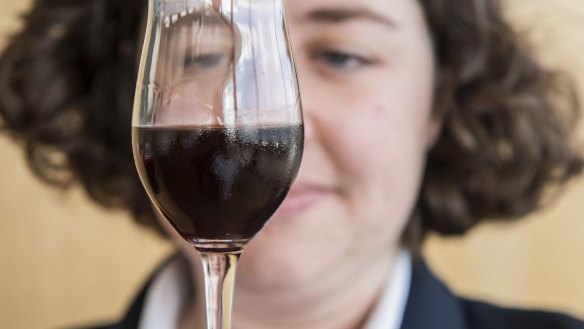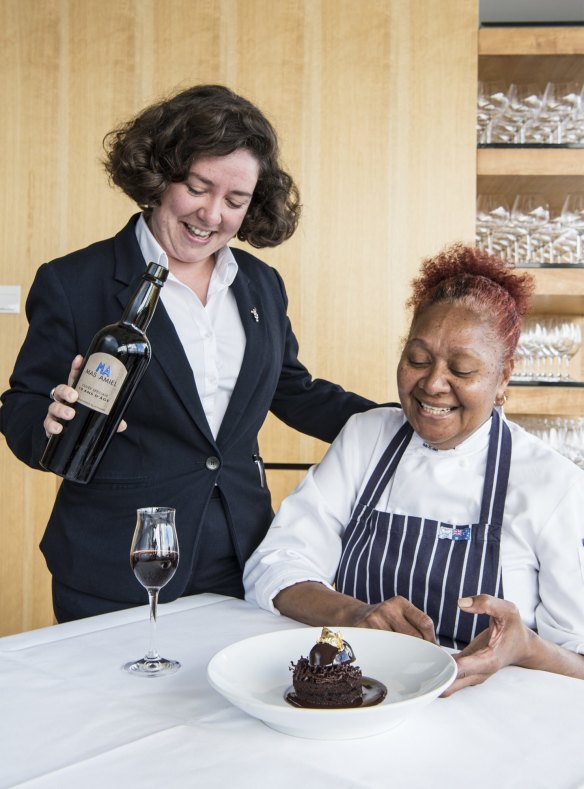Wine and chocolate is a match made in heaven (just remember these basic principles)

From tiny treasure-hunt eggs to elaborate desserts, chocolate is on the cards for most Australians this weekend. Chefs across the country are offering chocolate specials too, and restaurant sommeliers are digging deep to find the perfect beverages to match.
At Sydney's Catalina restaurant, well-known for its exceptional seafood, all eyes will be on head pastry chef Berny Osorio's Daintree chocolate egg special.
Head sommelier Andrew de Vries will pair the decadent chocolate cremeux, made with milk and dark Daintree Estates chocolate, with a Mas Amiel NV Cuvee 10 Year Old dessert wine.

"It goes wonderfully with chocolate dessert," de Vries says. "Made from grenache, it is an elegant and refined fortified wine from Roussillon in France."
We don't all have the pairing nous of a sommelier, but some cellar doors offer chocolate and wine pairing experiences that provide a glimpse into what does (and doesn't) work.
Yarra Valley winery Boat O'Craigo will run its Easter Wine and Cuvee Chocolate Sensory Experience every hour on the hour this long weekend. Assistant cellar door manager Kyla Fullerton said the planning process was full of surprises.

"You're looking for flavours in the wine and chocolate that complement each other but the amount of sugar and fat in chocolate is a factor," she says.
"For example, we thought we'd pair our rosé – which tastes of strawberries – with white chocolate but when we tasted them together, we found the rosé made the white chocolate seem oily and the chocolate made the wine seem more acidic."
In South Australia, Barossa Valley Chocolate Company runs wine and chocolate pairings all year round. Chocolatiers Amy Sajinovic and Steven McConnell pair their creations with drops from Barossa Vineyard Road wines.

The team also pairs non-alcoholic beverages with chocolate.
"We pair a Bickfords cloudy apple cordial with dark chocolate," McConnell says. "And a sparkling tropical cordial works well with ruby, milk or white chocolate."
In his role as beverage director at Adelaide's Restaurant Botanic, Hungarian-born sommelier Marcell Kustos is armed with a PhD in food, wine and emotion pairings.
"Generally speaking, chocolate is a combination of sweet and bitter," he says.
"The foundational scale of taste can shift towards sweet [white chocolate], bitter [dark chocolate] or somewhere in the middle [milk chocolate]. Add the origin of the cocoa to the equation and you'll get an array of fruit and floral aromas with subtle acidity."
Additions such as nuts, dried fruits, and native ingredients make chocolate and wine pairing a little more complicated.
"Food tends to have a larger influence on the beverage flavour than the other way around," Kustos says. "For that reason, the beverage should always be sweeter than the chocolate.
"Sweetness can come in the form of sugar or more as a perceived sweetness due to the high alcohol content and oxidative ageing in spirits [such as bourbon]. This guideline can help find outstanding pairings across the world of beverages."
Kustos says white chocolate is often forgotten "yet it offers a lot of versatility".
"For white chocolate with tangy dried cranberries or raspberry, add a pinch of salt, and try it with a decadent brut champagne that has a higher dosage [of sugar]."
The sommelier also recommends revisiting Australia's longstanding fortified wine heritage. "A lightly chilled tawny or aged vintage fortified with roasted hazelnut white chocolate is a real treat," he says.
"One of my latest discoveries is umeshu [a Japanese liqueur made from sake, green ume plums and rock sugar] with milk chocolate.
"The smoky, roasted treacle syrup and concentrated fruit flavours of the umeshu work with subtle caramel notes in the chocolate, while the tangy acidity leaves the palate with freshness."
As far as misconceptions go, dark chocolate with full-bodied, oaky reds is a no-go. The mismatch is due to bitterness in the chocolate and the wine, thanks to tannins.
"It might feel contradicting but most white wines pair better with dark chocolate than reds," Kustos says.
Heavenly chocolate and matches for Easter
White chocolate: juicy pinot noir.
Milk chocolate: intense, skin contact-style champagne.
Dark bitter chocolate: gruner veltliner, Australian tawny, whisky or rum.
Hazelnut milk chocolate: tawny, vintage fortified, Madeira, oloroso sherry or sweet Marsala.
